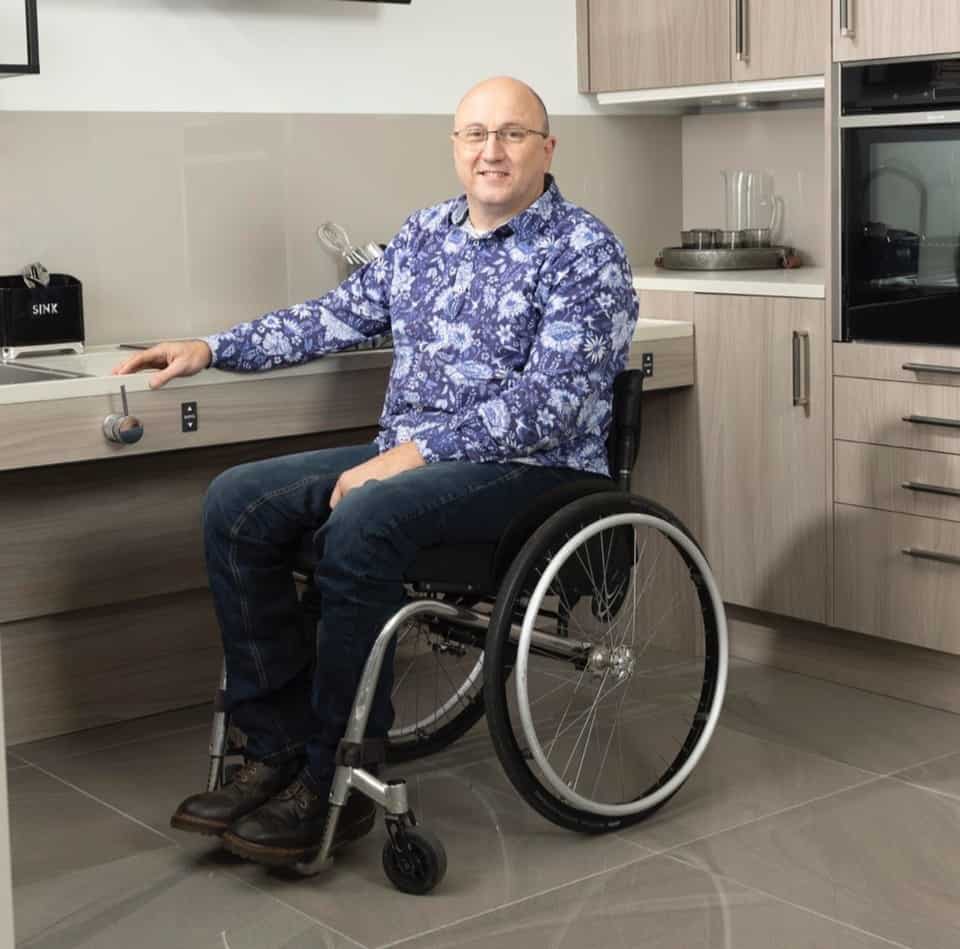EXCLUSIVE: Assistive equipment – The importance of future-proofing homes with accessible kitchens

Adam Thomas, a leading design consultant and Symphony ambassador, explores the requirements for an accessible kitchen. The article discusses the need for future-proofing homes to ensure that every member of the household can live safely and independently wherever possible.
Here in the UK, homeowners are continuing to feel the squeeze on their budgets. Adults are finding it increasingly difficult to move out, either due to high rents or unaffordable mortgages, while grandparents move in to make life more comfortable and easier all round, saving money at the same time.
This has led to an increase in multi-generational living – nine million multi-generational households in fact. Add to this that there are over 14 million registered disabled people in the UK, and it demonstrates very clearly why there is a real need to build, create, or retrofit inclusive homes that cater for everyone’s needs.
Accessible homes provide independence as well as safety and peace of mind. Along with the bathroom, the main room of the house that this affects is the kitchen.
Symphony is one of the UK’s largest manufacturers of fitted kitchens and, as such, has developed an inclusive and accessible collection called Freedom, which is adaptable for users of all ages and abilities. The collection is stylish as well as safe, with products and solutions that minimise awkward, impossible, or inconvenient movement.
The main issues that need to be addressed within any kitchen that is to be future-proofed are the kitchen layout, storage, appliances, worksurfaces, and plug sockets.
Determining the right layout
When it comes to the overall design and layout of the kitchen, key elements such as the positioning of appliances and the sink are crucial to all-inclusive access and usability.
The number of steps between the cooking appliances and the sink for instance has a huge impact on safety, so the placement of the cooker or oven and hob should be as close as possible to prevent the need for carrying hot pans of water from one to the other. The oven should also be installed with a sufficient amount of worksurface next to it so that meals can be taken straight from the oven and placed safely and quickly beside it.
Making storage more accessible
Kitchen storage should ideally be placed in such a position so as to reduce unnecessary carrying, crouching, and reaching. Wall cabinets need to be fitted at a height that is as accessible as possible with pull-down compartments or shelving. Pull-out larders and base cabinets with drawers are also easier to access while reduced depth cabinets is another useful design feature, ensuring that contents are within easy reach and items don’t get pushed into the back.
Making good appliance choices
Kitchen appliances also need careful consideration when it comes to future-proofing, especially for ovens and hobs. The best option for ovens is the slide and hide style, where the door pulls open then retracts safely underneath, preventing users from being unable to access the oven from a side or from getting burnt on a hot oven door. A heat-resistant pull-out shelf underneath a mid-height built-in oven is also good for anyone who would benefit from a safe resting place for hot and heavy items when transferring them in or out of the oven, plus for a wheelchair user this will also protect their legs.
In terms of hobs, induction is the safest as it’s the pan that heats up rather than the hob and it can also be installed in a flexible-height worksurface. By ensuring that the controls are at the front rather than the side, it will also prevent unnecessary leaning or reaching over hot pans. Touch slide controls are also easier for those with arthritis in their hands or fingers to operate.
Using the latest wi-fi technology will also help to future-proof the kitchen. Extractors that become activated when the hob is in use are key, as are intelligent appliances that can be controlled via a smartphone or tablet.
Hands-free taps
For the tap, consider sensor-operated models that can be used easily by all ages and abilities simply by swiping the hand underneath. Boiling water taps are also worth the investment. They may cost more but they come with built-in safety features and do away with the need for a kettle, which can be cumbersome to use and pour.
Rise and fall worksurfaces
For maximum flexibility, a rise and fall worksurface can be positioned at the optimum height for anyone that uses the space. Wheelchair users need a good amount of leg space for instance, as well as the correct height, and, for added accessibility, a cabinet with a pull-out table is space-saving as well as convenient.
The finishing touches
Plug sockets and switches should also be placed conveniently for small appliances and gadgets so rather than wall sockets, which can be hard to reach, solutions such as tower sockets and flip sockets that retract back into the worksurface for a flush surface after use are key.
In conclusion
Future-proofing the kitchen is certainly worth thinking about, whether or not it’s something that is required right now. Even a few retro-fit solutions or better planning can make life easier and safer for all members of the household, and that can only be a good thing.

